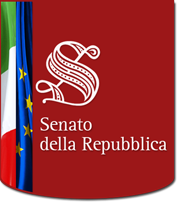Come si misura la felicità dei cittadini? Il benessere equo e sostenibile nel ciclo italiano di finanza pubblica

Soddisfazione, beatitudine, sviluppo umano, qualità della vita, libertà di essere e di fare, auto-realizzazione, utilità, piacere: da tempo è in corso, a livello internazionale, un dibattito sul superamento del PIL come unico indicatore del benessere. I parametri sui quali valutare il progresso di una società non possono essere esclusivamente di carattere economico, come dimostrano le classifiche del PIL pro capite della Banca Mondiale: nel 2017 l'Italia rientrava nel 16% dei paesi più ricchi, ma era solo al 48° posto (su 155) secondo il World Happiness Report. A parità di PIL, insomma, rispetto ad altri paesi all'Italia mancano alcuni "fattori di felicità".
Ma che rapporto c'è tra PIL e felicità? E come si misura il benessere dei cittadini? A livello internazionale sono stati sviluppati gli SDG (Sustainable Development Goals), un set di indicatori per andare "oltre il PIL".
In questo processo l'Italia è all'avanguardia: è il primo Paese che - con la riforma del bilancio dello Stato del 2016 - ha attribuito ufficialmente al benessere equo e sostenibile (BES) un ruolo nell'attuazione e nel monitoraggio delle politiche pubbliche. Qui una guida ai fondamenti metodologici e alle difficoltà operative dei nuovi indicatori.
How is happiness measured? The Equitable and Sustainable Well-being in the Italian public finance cycle
Satisfaction, happiness, quality of-life, self-realisation, utility, pleasure: there is an ongoing international debate on whether GDP should be ousted as the sole indicator of well-being. The benchmark on which the progress of a society can be evaluated should not be solely economic. This is demonstrated by the World Bank's per capita GDP classifications: in 2017 Italy was among 16% of the most prosperous countries, but ranked only 48th (out of 155) in the World Happiness Report. In short, given parity of GDP, by comparison with other countries, Italy is lacking in certain "happiness factors".
But what is the relationship between GDP and happiness? And how can the well-being of citizens be measured? A set of indicators, known as SDG (Sustainable Development Goals), which "go beyong GDP", has been developed at international level with the 2030 Agenda. Italy has developed the BES (Benessere Equo e Sostenibile) indicators, with which is at the forefront in this process: it is the first country which has officially accorded equitable and sustainable well-being a role in the public finance cycle.
This document is a guide to the methodological foundations and practical difficulties of the new Italian BES indicators.






 Focus
Focus